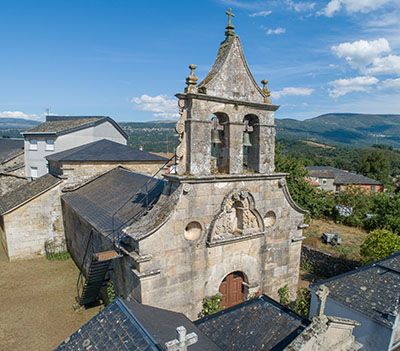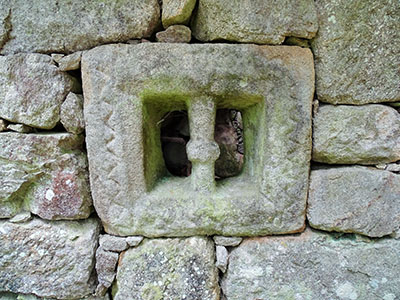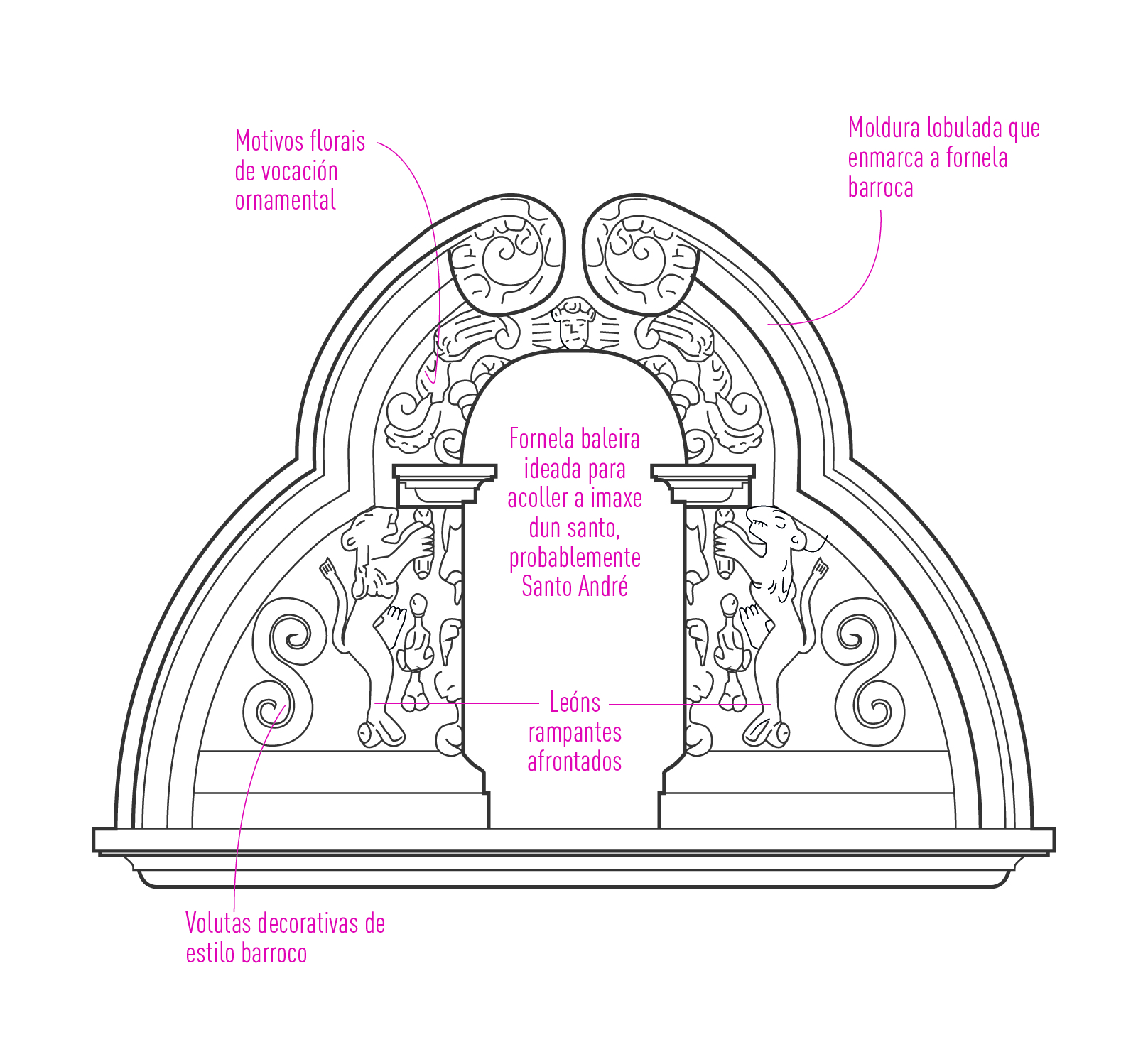
The church of Saint Andrew of Bembibre (from Latin bene vivere, literally, “where one lives well”), dependent on the Diocese of Astorga, is the cradle of Saint Mary of Pradocabalos from, at least, the mid-19th century. It highlights the sgraffitos of the outer wall that are located just below the ledge of the main altar.
Its main facade welcomes the main artistic values of the temple, with a baroque niche - currently empty - framed with a lobed moulding. Its interior is richly decorated with scrolls and high reliefs, a base of floral motifs and two rampant lions facing each other. The structure finishes in height with an elegant double section bell gable decorated on its sides by scrolls and pinnacles.
In its interior there stands out an elegant baptismal font decorated with a scallop, as well as several images of Saint Andrew, with his characteristic saltire cross. From the architectural point of view, the triumphal arch stands out, with an elegant construction, as well as three Baroque altarpieces, in particular the main one, all of it being gilded and fitted with floral and geometric motifs.
AN ANCIENT MONESTARY

One of the most outstanding artistic assets of Bembibre is the bifora window that is positioned and reused, on the wall of a traditional winery located in O Val. It is an archaic quadrangular window with a pair of rectangular openings without arches, divided by a central column that has a ring in its centre.
This window, reminiscent of the one located on the main altar of the Romanesque church of Saint Mary of Viana do Bolo, is said to have come from a tall medieval monastery referred to by the toponymy of Bembibre as A Chaira do Crego and O Eirexario.
